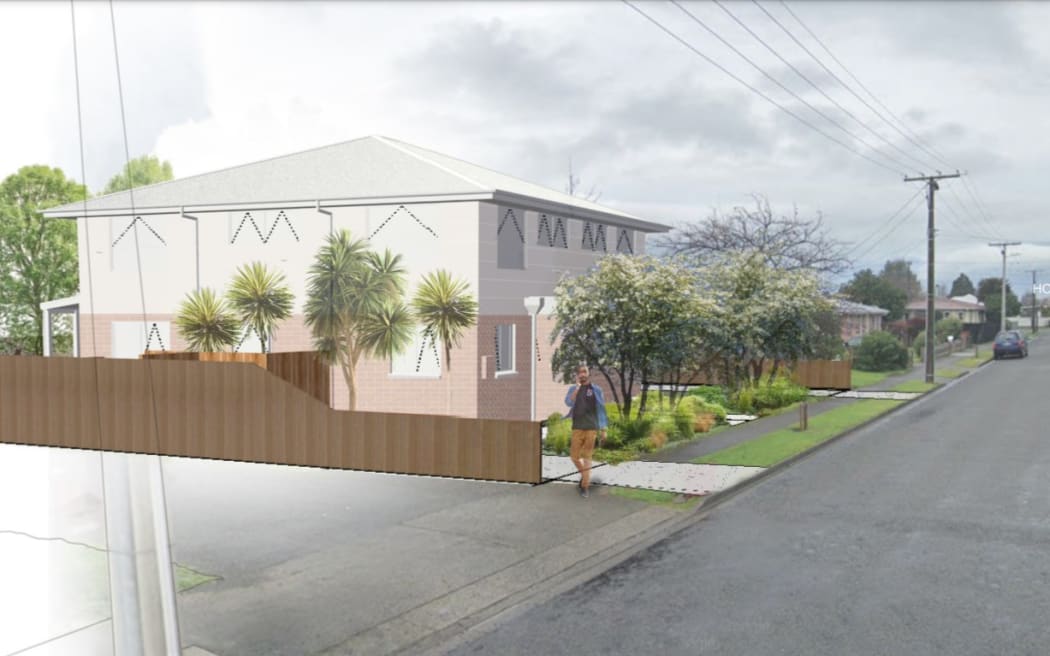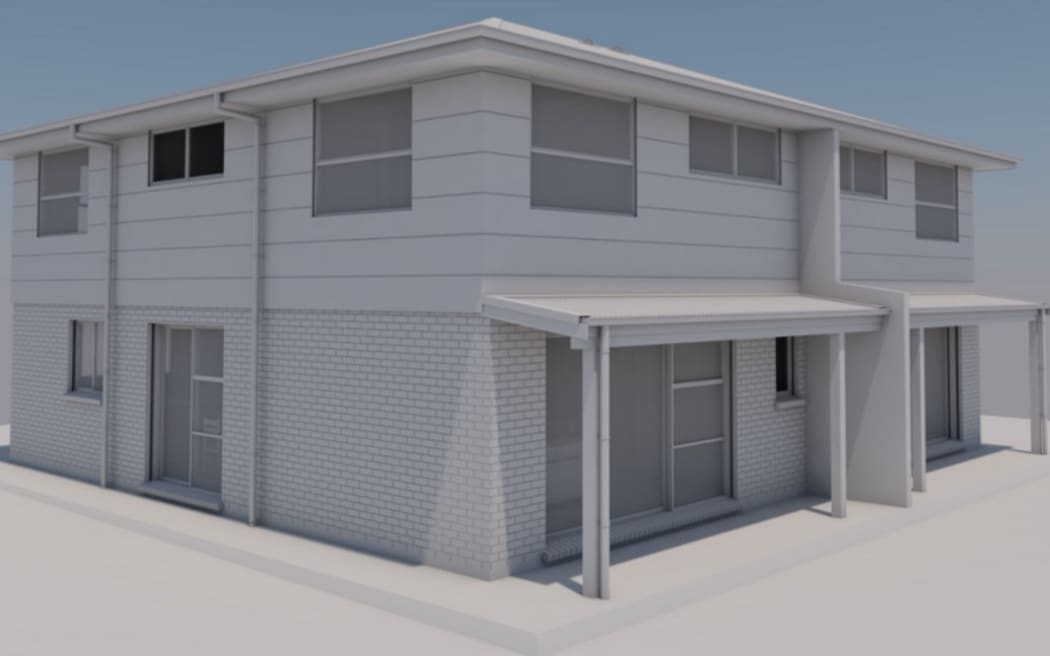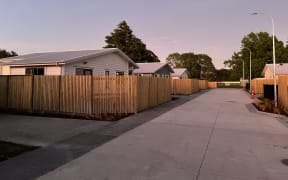
Landscaping plans were provided to the council as part of the consent. Photo: Supplied / Rough Milne Mitchell Landscape Architects
An "unattractive" and "brutal" duplex of "basic building materials" has been given the go-ahead in Blenheim despite opposition from a council staffer and neighbours.
The two-storey duplex of two four-bedroom homes on Buick Street, a cul-de-sac in the suburb of Redwoodtown, both have a footprint of 140 square metres. Bedrooms are to be upstairs, living areas on the ground floor, and each dwelling will have two off-street car parks.
Marlborough District Council environment planner Ian Sutherland recommended the consent be declined, raising issues with the "unattractive" structure, described as having "little interesting features".

Sutherland said, according to the resource consent decision released this month, the "doubling of density" would have adverse effects on the amenity values and character of the street, such as extra noise and reducing neighbours' privacy.
His concerns were in line with neighbours who opposed it over concerns of increased noise and traffic, shade from the building's height, parking congestion, and the building's appearance.

The section on Buick Street where the development is to be built. Photo: Local Democracy Reporting / Maia Hart
A resource management consultant on behalf of a resident also recommended the application be declined, saying the development's density was too high, given the "existing character" of the area.
He said the design was "brutal", lacked visual interest and was "essentially a square shape".
His submission said it would also set a "dangerous precedent" for similar sites in Marlborough because the proposal did not meet requirements of the Proposed Marlborough Environment Plan (PMEP).
Under the PMEP, sections in the Urban Residential Zone 2 had to be a minimum size of 400m2. Subdividing the Buick Street site would make each section 300m2.
After a resource consent hearing, independent commissioner Antoinette Besier said in her decision she thought the landscape plan provided by the developer would "soften" the appearance of the building.
The owner also volunteered to frost the second storey windows on the eastern side to improve privacy, which one of the neighbours accepted was "adequate".

Consent has been granted for a duplex to be built on Buick Street in Blenheim. Photo: Supplied / Marlborough District Council Smartmaps
Besier said the PMEP did not control urban design features to the level raised by residents - and while she somewhat agreed with concerns, she did not consider it was enough to decline the consent.
While she agreed the proposal was inconsistent with elements of the PMEP, such as catering to a lower population density, larger lot sizes and greater privacy, she noted it was consistent with other elements.
This included location, intensification and access to services, she said.
In granting the consent, Besier referred to the Housing and Business Development Capacity Assessment 2021, released last year.
It predicted Marlborough would run out of land zoned for housing within 30 years - leading to a shortfall of 900 dwellings.
Council chief executive Mark Wheeler last year said to councillors it was possible that residential-zoned land would not be developed soon enough to meet demand over the next five years, and landowners held the key to unlocking this.
She did not think the consent would set a "dangerous precedent" given there were national directives to promote residential intensification and avoid residential development on productive land.
As part of the consent, construction was limited to between 7:30am and 5:30pm, Monday to Friday. This could be extended to Saturdays once the build was "closed in", meaning cladding, windows and external doors were completed.
No radios or speakers were to be used during construction, and construction noise should not exceed the recommended limits.
Minor changes could be made to the internal layout and location of windows and doors, but no living areas could be upstairs. The height of the dwellings should match what was already planned, but the consent holder or future owners could improve the external appearance of the building.
The consent also required the upstairs windows on the eastern side to be frosted.
Landscaping should be maintained until all planting was established and "self-sufficient", and any plants that did not survive should be replaced.
The council could review the consent at any time, particularly if complaints were made by neighbours or members of the public.
Local Democracy Reporting is Public Interest Journalism funded through NZ On Air




